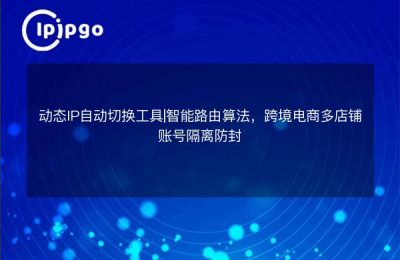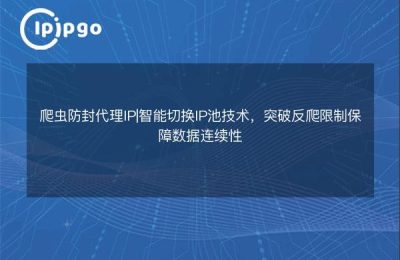
In today's Internet age, online security and privacy protection have become a major concern. Whether it's to hide your real IP or to access certain specific content, an IP online proxy is a powerful tool. So what exactly is the process of an IP online proxy? Let's explore it in detail today.
What is an IP Online Proxy?
IP Online Proxy, simply put, is a proxy server that relays your network requests, thus realizing the purpose of hiding your real IP address. Just like you get a friend to deliver a courier for you in real life, the proxy server is that friend, it will complete the network request for you and return the result to you.
Why do I need an IP online proxy?
There are many benefits of using an IP online proxy. It protects your privacy from being tracked. It can also pass through a proxy server and you can also boost your internet speed.
How to choose the right proxy IP service?
There are many proxy IP service providers in the market and it is very important to choose a suitable service. First, you need to consider the stability and speed of the service. After all, no one wants to have frequent dropouts or slow Internet speeds when using a proxy. Secondly, you need to focus on the security and privacy measures of the service. Finally, price is also an important factor, and choosing a cost-effective service is the way to go.
Specific operation steps of IP online proxy
Below we explain in detail the specific steps of IP online proxy.
1. Register and purchase proxy IP services
First of all, you need to register an account on the website of the proxy IP service provider. Once the registration is complete, choose the right package according to your needs and make the purchase. Generally, the service provider will offer a variety of packages for you to choose from, ranging from per-traffic billing to per-time billing.
2. Obtaining a proxy server address and port
After the purchase is complete, you will be given the address and port of one or more proxy servers. This information is very important as you will need to use them in subsequent setups.
3. Setting up proxy IPs
Next, you need to set up the proxy IP on your device. The setup method may vary between operating systems and browsers, but the general steps are similar. Here are the setup methods for a few common devices:
Windows system
In Windows, you can set up a proxy IP by following these steps:
- Open the Settings application
- Click on "Networks and Internet".
- Select the "Proxy" option
- In "Manual Proxy Settings", turn on the "Use Proxy Server" switch.
- Enter the proxy server address and port, save the settings
Mac system
The steps to set up a proxy IP on a Mac system are as follows:
- Open "System Preferences."
- Select the "Network" option
- Select the network connection you are using and click the "Advanced" button.
- Switch to the "Proxy" tab and check "HTTP Proxy" or "HTTPS Proxy".
- Enter the proxy server address and port, click "OK" and save the settings.
Browser Settings
If you only want to use a proxy IP in a specific browser, you can configure it through the browser's settings. Take Google Chrome for example:
- Open Chrome and click on the menu button in the upper right corner
- Select the "Settings" option
- Click on the "Advanced" button to expand the advanced settings.
- In the "System" section, click "Open proxy settings".
- According to the system prompts, enter the proxy server address and port, save the settings
Test whether the proxy IP is effective
After the setup is complete, you need to test if the proxy IP is in effect. You can check if the current IP address has been changed by visiting some IP testing websites. If the displayed IP address is the same as the proxy server's IP address, the setup is successful.
Common Problems and Solutions
In the process of using IP online proxies, you may encounter some problems. Here are a few common problems and their solutions:
1. Unable to connect to proxy server
If you cannot connect to the proxy server, first check that the proxy server address and port are entered correctly. Next, make sure your internet connection is working. Finally, try changing a proxy server address.
2. Slowdowns in Internet speeds
After using a proxy IP, the internet speed may decrease. This may be because the proxy server is not fast enough. You can try replacing the proxy server with a faster one or choose a higher quality proxy IP service.
3. IP address not changed
If the IP address does not change after setting the proxy IP, the proxy settings may not have taken effect. You can recheck the setup steps to make sure all settings are correct.
concluding remarks
With these steps, you can easily master the process of IP online proxy and enjoy a safer and freer internet experience. We hope this article is helpful to you, so that you can swim in the world of the Internet without any obstacles. If you have any questions or suggestions, please feel free to leave a comment below and we will get back to you as soon as possible.








